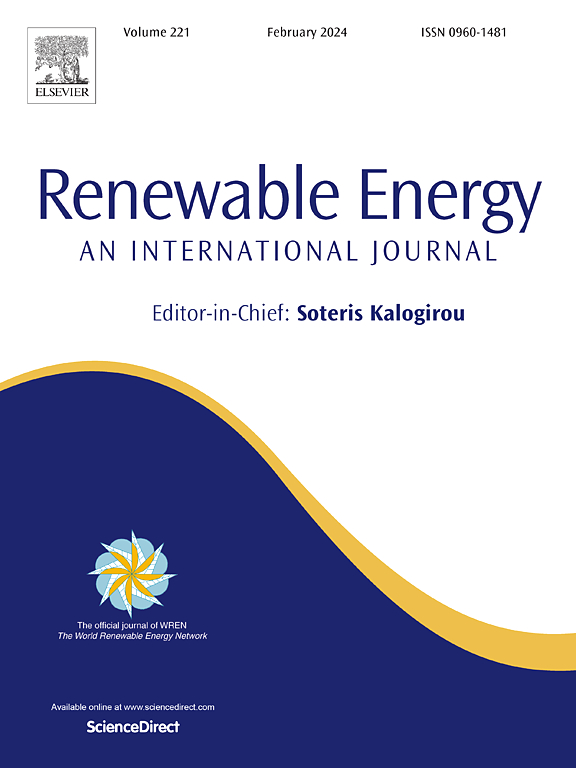用于光学性能分析的定日镜表面在重力和风荷载下的变形和编码
IF 9
1区 工程技术
Q1 ENERGY & FUELS
引用次数: 0
摘要
在太阳能塔式系统(SPT)中,定日镜会受到重力和风等外部载荷的变形,对接收器上的辐射通量密度分布(RFDD)产生显著影响。本文对这些外载荷引起的定日镜变形光学性能进行了全面详细的分析。首先,采用有限元方法计算定日镜在外加载荷作用下的变形。然后利用曲面编码方法对变形定日镜曲面进行紧凑表示。最后,采用变形定日镜表面的紧凑表示作为蒙特卡罗光线追踪仿真的输入,得到高保真的定日镜表面。详细的仿真、验证和分析表明,在风速为20 m/s的条件下,定日镜的坡度误差可达2.97 mrad,通量斑大小比纯重力条件下增加310.7%。此外,在各种表面编码方法中,高斯混合模型是最可行的表面编码方法,可用于单定日镜场和定日镜场的RFDD模拟。本研究为分析重力和风对定日镜表面变形和RFDD的影响提供了一种全面的方法,为优化定日镜设计和提高SPT性能提供了可能。本文章由计算机程序翻译,如有差异,请以英文原文为准。
Heliostat surface deformation and encoding under gravity and wind loads for optical performance analysis
In solar power tower systems (SPT), the heliostats will be deformed by external loads such as gravity and wind, significantly influencing the radiative flux density distribution (RFDD) on the receiver. In this paper, an optical performance of deformed heliostat caused by these external loads is analyzed comprehensively and in detail. First, finite element analysis is performed to compute heliostat deformation under external loads. Then the deformed heliostat surface is compactly represented using surface encoding method. Finally, the compact representation of deformed heliostat surface is adopted as input for Monte Carlo ray tracing simulation to obtain the high-fidelity RFDD. The detailed simulations, validation and, analysis show that under wind conditions of 20 m/s, the slope error of heliostat can reach up to 2.97 mrad, leading to a 310.7% increase in the flux spot size compared to gravity-only conditions. Furthermore, the results reveal that among various surface encoding methods, the Gaussian mixture model is the most feasible surface encoding method for RFDD simulations of both single heliostat and heliostat fields. The proposed work provided a comprehensive approach for analyzing the effects of gravity and wind on heliostat surface deformation and RFDD, offering potentials for optimizing heliostat design and enhancing SPT performance.
求助全文
通过发布文献求助,成功后即可免费获取论文全文。
去求助
来源期刊

Renewable Energy
工程技术-能源与燃料
CiteScore
18.40
自引率
9.20%
发文量
1955
审稿时长
6.6 months
期刊介绍:
Renewable Energy journal is dedicated to advancing knowledge and disseminating insights on various topics and technologies within renewable energy systems and components. Our mission is to support researchers, engineers, economists, manufacturers, NGOs, associations, and societies in staying updated on new developments in their respective fields and applying alternative energy solutions to current practices.
As an international, multidisciplinary journal in renewable energy engineering and research, we strive to be a premier peer-reviewed platform and a trusted source of original research and reviews in the field of renewable energy. Join us in our endeavor to drive innovation and progress in sustainable energy solutions.
 求助内容:
求助内容: 应助结果提醒方式:
应助结果提醒方式:


